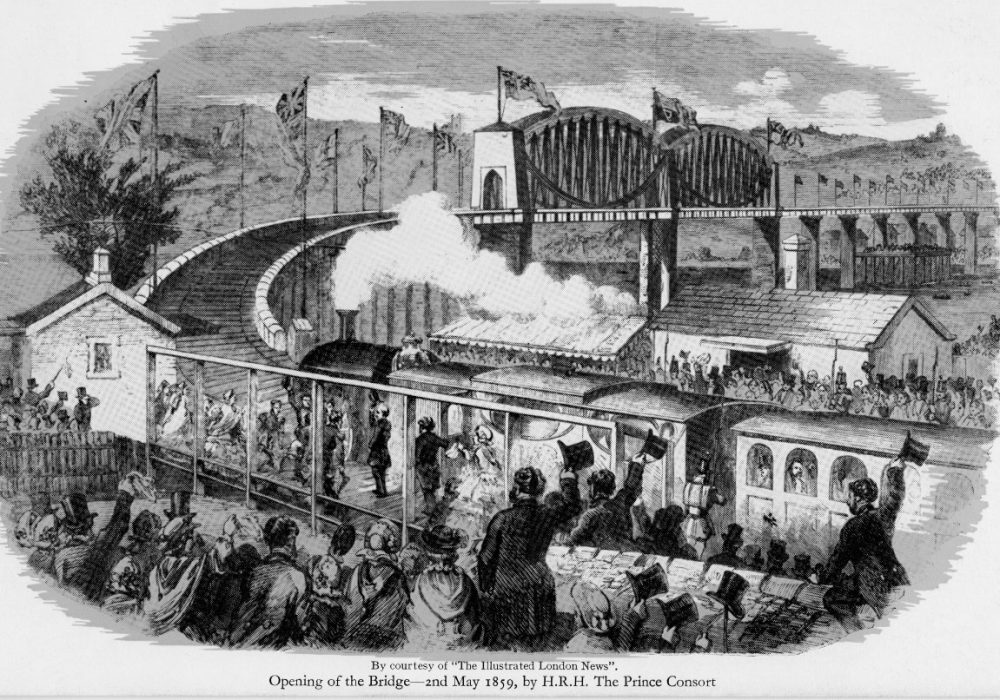Other sites in London:
SS Great Eastern Launch Site
Just across the river from the Brunel Museum is the construction and launch site of Brunel’s last project, The Great Eastern. The Great Eastern was an iron sailing steamship and the biggest ship in the world for half a century. It carried enough coal to steam from England to Australia and back again without re-fuelling and was six times bigger than anything else afloat. At seven hundred feet it was longer than his railway terminus at Paddington, and was launched sideways in 1858 because the Thames is not wide enough.
The great ship was broken up, but Thames Clippers will take you to the original launch ramps, now landscaped into gardens by the river pier. The information board, timbers and a very large chain are not visible from the river, so disembark at Masthouse Terrace on your way to Greenwich, or before turning back for the City.
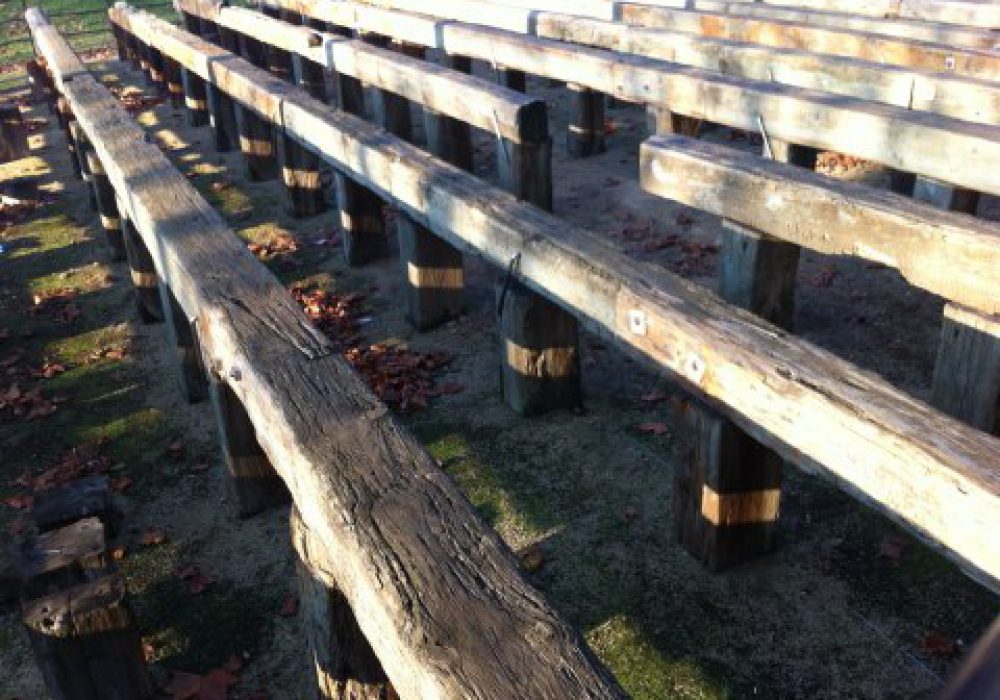
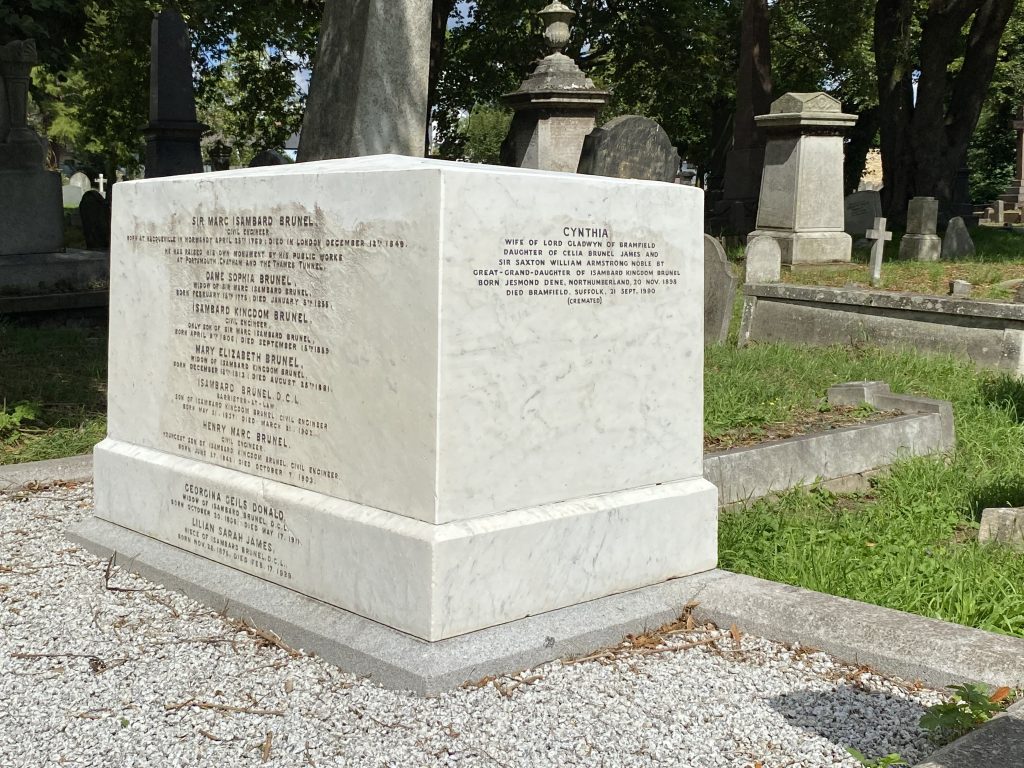
The Brunel family burial plot in Kensal Green Cemetery, London W10 4RA
Several generations of the descendents of Sir Marc Isambard Brunel are buried in a plot in Kensal Green Cemetery, London. The monument, a block of Carrara marble with lead lettering, was restored in an initiative by the Friends of Kensal Green Cemetery, with the co-operation of the landowners, the General Cemetery Company, and financial support from English Heritage, the Royal Society and the Brunel Museum. Lord Gladwyn, the Brunels’ direct descendant, unveiled the restored monument, and Robert Hulse, of the Brunel Museum, led the tributes.
Crystal Palace Park
The Great Exhibition of the Works of Industry of all Nations, best known as The Great Exhibition, was held in the Crystal Palace on Hyde Park, London. The Crystal Palace was designed by Joseph Paxton, the Duke of Devonshire’s head gardener, and was opened by Queen Victoria on 1st May, 1851. The Exhibition closed On 15th October, after which the glass and iron Palace, being of prefabricated construction, was removed and rebuilt on a grander scale in Sydenham, on the place we now know as Crystal Palace Park – about six miles south of the Brunels’ Thames Tunnel. The rebuilt Sydenham Crystal Palace was framed by two 284ft-high towers. The towers were designed by Isambard Kingdom Brunel and held the water to feed the fountains on the park. The building was opened by Queen Victoria on 10th June 1854 (not on 10th May, as shown on the bookmark illustrated here).
Brunel’s south tower (on the left in the bookmark) also housed the Crystal Palace School of Engineering; and John Logie Baird conducted many television experiments here. The Palace was destroyed by fire in 1936. Brunel’s towers remained, but were removed in 1940-41 lest they became pointers for the Luftwaffe’s bombing raids on London. The base of Brunel’s south tower is listed Grade II by Historic England; more at The Crystal Palace Foundation News – September 2020 . Images of the Crystal Palace and of Crystal Palace Park may be found by Internet search. For more about the Crystal Palace, please go to our website and click on HISTORICAL ARTICLES.

Elsewhere in the UK:
Clifton Suspension Bridge
At just age 23, the Clifton Suspension Bridge in Bristol was Brunel’s first solo project, and his second after the Thames Tunnel. The young engineer’s ambitious design was set to be the highest and longest bridge in the world – but the build did not go to plan. It took 33 years to complete the crossing, which opened five years after Brunel’s death. The bridge is free to cross on foot and £1 by motor vehicle. The free Visitor Centre is open daily from 10am-5pm. Free tours take place on weekends and bank holidays whilst the adventurous can book paid experiences inside the structure during the summer.
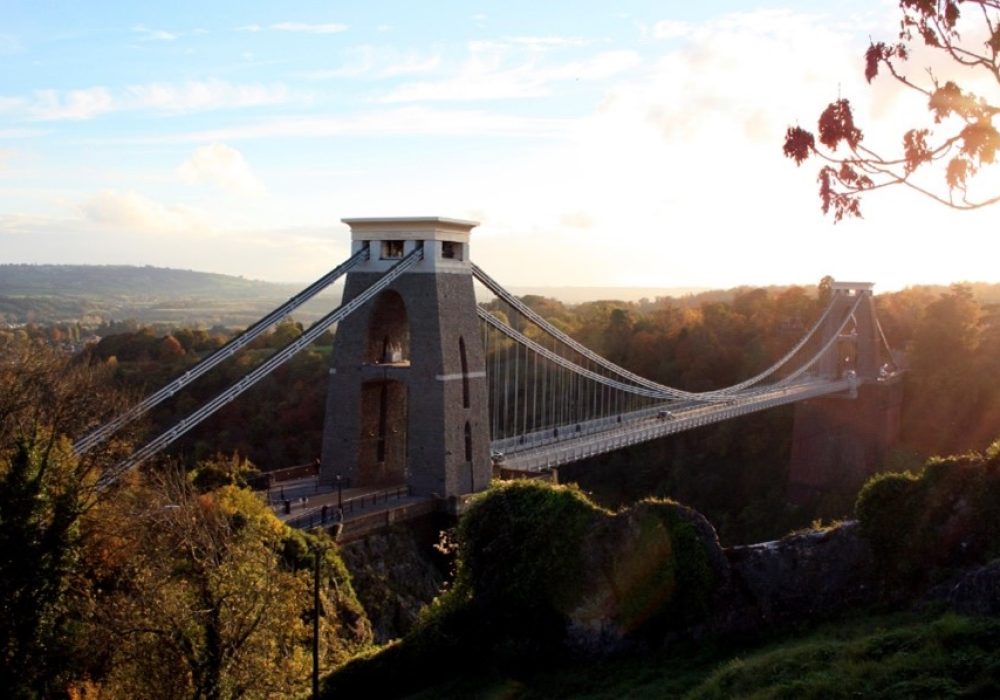
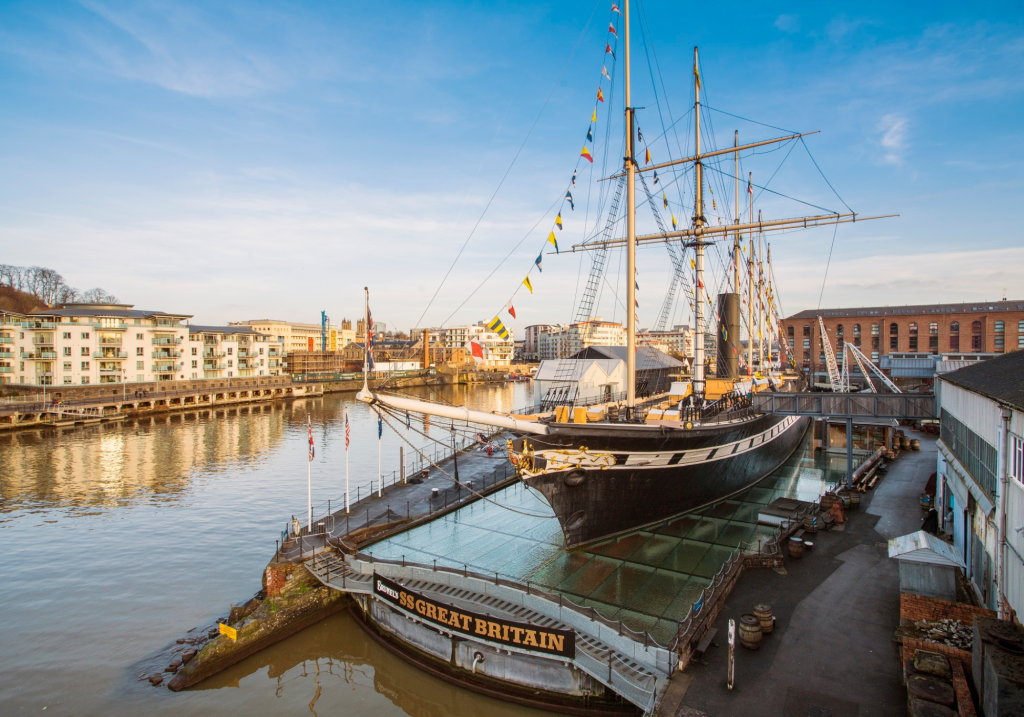
SS Great Britain
When the SS Great Britain was launched in 1843, it was the largest passenger ship ever built and the first iron steamship to cross the Atlantic. Most daring of all, Brunel gave his creation a screw propellor, the newest invention in maritime technology.
Though it began as a luxury ocean liner carrying travellers from Liverpool to New York, it spent 25 years of its life carrying passengers to Australia before finally being abandoned in the Falkland Islands in the 1930s. The story might have ended there if it was not for a rescue mission in 1970, which brought the SS Great Britain back to the very dry dock where it was built in Bristol.
Today, the ship is looked after by the SS Great Britain Trust, a dedicated education charity. As well as Brunel’s SS Great Britain, visitors to Bristol’s No. 1 tourist attraction can also discover more about the life and work of IK Brunel in the award-winning Being Brunel Museum.
Royal Albert Bridge
Finished in 1859, the Royal Albert Bridge structure is Grade 1 Listed and internationally recognised as totally unique, and the only one in the world. IK Brunel designed the bridge using innovative and ground-breaking technology. The lenticular trusses designed by Brunel were an ingenious engineering solution and were the last structure he created.
The construction of the Royal Albert Bridge opened Cornwall up to the rest of the world, enabling the railways created during the Industrial Revolution to connect the country. The Royal Albert Bridge is still a key connector with 74 trains a day.
Established to celebrate the engineering legacy of the Tamar Estuary’s historic bridges, the Bridging the Tamar Visitor and Learning Centre opened in 2019. The exhibition Centre interprets the heritage of both the 20th century Tamar Bridge and Brunel’s iconic 19th century Royal Albert Bridge. The free to enter Centre, situated on the Devon Cornwall border, is open seven days a week and runs a programme of public events, guided tours and school workshops. A grant from the National Lottery Heritage Fund (NLHF) made the project possible, with the remainder being funded by the Tamar Bridge and Torpoint Ferry Joint Committee.
